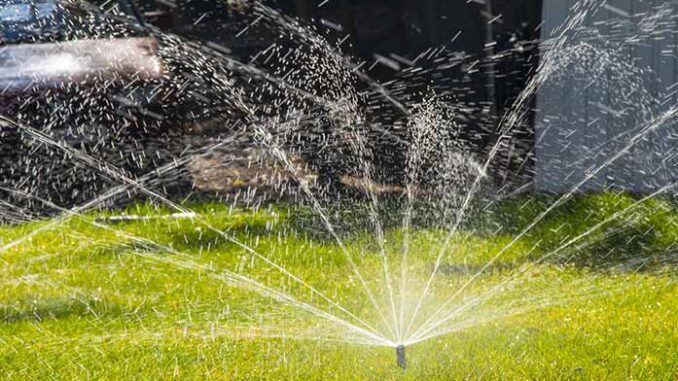
On Tuesday, Arizona lawmakers began examining solutions to Arizona’s water future through the new Joint Legislative Ad Hoc Committee on Water Security. The committee established by House Speaker Ben Toma and Senate President Warren Petersen.
The committee met for the first time to outline its goals for the ensuing months and to hear preliminary testimony on the most pressing issues facing Arizona’s water supply. Objectives of the committee include addressing growth and economic development, while promoting conservation, recharge, and reuse of water in our urban and rural areas and everywhere in between.
The committee heard presentations from the Salt River Project (SRP) and the Water Infrastructure Finance Authority (WIFA) to get a better understanding of the current water outlook for the state, as well as the level of investments that Arizona has made and will be making in new water infrastructure over the next several years.
SRP delivers approximately 800,000 acre-feet of raw water to agricultural, municipal, and urban customers in the Phoenix Metropolitan area every year. Charlie Ester is a hydrologist and has worked at SRP for the past four decades. As their Director of Water Supply, he delivered a presentation on the status of SRP’s 13,000-square-mile watershed, which replenishes SRP’s seven reservoirs along the Salt and Verde rivers.
“The Valley has a diverse supply of water that is unlike any other community in the Southwest. This includes surface water from lakes and rivers that SRP manages,” said Mr. Ester. “This year, SRP received more snow across its watershed than we’ve received since 1973 and the most runoff since 2005. It was enough water to fill our reservoirs to capacity while releasing an extra 700,000 acre-feet into the Salt and Gila rivers.”
“SRP has managed its system over time to purposefully store water in wet years in order to provide a reliable water supply to our customers during the dry years,” Mr. Ester added. “SRP has a 120-year history of meeting the challenges of drought and giving the business community and our residents confidence in their water resources now and into the future. We are undertaking significant projects such as the Bartlett Dam expansion to not only restore critical storage capacity for SRP, but also to create new renewable supplies for non-SRP communities to meet their water challenges. At the same time, we are pursuing a new interconnection with the Central Arizona Project system that will add flexibility and efficiency to both systems and present new opportunities for non-SRP entities to move their water for their needs by maximizing the use of existing delivery infrastructure.”
As part of a more than $1 billion commitment to securing Arizona’s long-term water future, WIFA was given an expanded role to see these projects to fruition. Chelsea McGuire, Assistant Director for WIFA, delivered a presentation on the funds and options available to residents and communities to help improve water supplies and strengthen the water resources that Arizona communities and economies depend on.
According to WIFA, up to $200 million is available to cities, towns, counties, as well as irrigation districts, natural resource conservation districts, and domestic water improvement districts, to increase the conservation of water across Arizona through the Water Conservation Grant Fund, which will provide up to $3 million per program and up to $250,000 per project.
Additionally, up to $190 million is available to rural cities, towns, and counties located outside of the Phoenix, Pinal, and Tucson active management areas to develop projects that promote the replenishment, recovery, reclamation, and recharge of stormwater and groundwater in rural parts of the state, thanks to the Water Supply Development Fund. Applicants can receive up to $3 million per project as a loan, or up to $2 million per project as a grant.
“WIFA was the right place to entrust these funds,” said Ms. McGuire. “We’re here; we’re geared up; and we’re ready. We want to stack different resources to make funds go even farther. Arizona is serious about water security, and it needs a holistic approach to secure its water future. The historic WIFA legislation was that holistic approach. The first application period for the Water Conservation Grant Fund opportunity closes on Friday. We anticipate a significant number of applications. Arizona communities should submit their applications as soon as possible.”
“Upon the Governor’s signature of a bill I’m working on this session, even more entities will be able to take advantage of the WIFA conservation dollars,” said Senator Sine Kerr, Co-Chair of the Committee. “We need an all-of-the-above solution for this crucial issue that impacts all Arizonans. These investments in conservation programs and new water supply development projects will be pivotal as we continue to meet as a committee to address our state’s most pressing water challenges.”
Next steps for the committee include scheduling future meetings to hear from experts on issues such as groundwater modeling, management best practices for urban and rural areas across the state and finding additional sources of water for Arizona communities.
